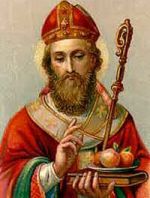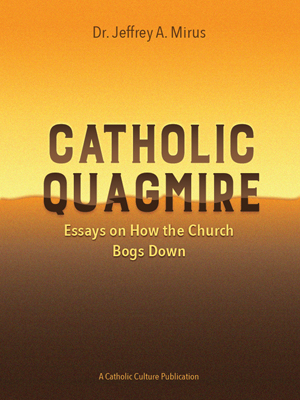Symbol of Communion with Church of Rome
Dear Brothers and Sisters!
1. Yesterday we celebrated the Solemnity of Sts Peter and Paul. These two Apostles, whom the liturgy calls the "Princes of the Apostles", were associated by the mysterious plan of divine Providence, despite their personal and cultural differences, in a single apostolic adventure, and the Church joins them in one commemoration.
Yesterday's solemnity is very ancient; we find it in the Roman sanctoral cycle even earlier than the feast of Christmas. In the fourth century it was customary on that day to celebrate three Holy Masses in Rome: one at St Peter's Basilica in the Vatican, another at the Basilica of St Paul-Outside-the-Walls and the third in the Catacombs of St Sebastian, where according to tradition the bodies of the two Apostles were hidden for a while at the time of the invasions.
St Peter, a fisherman of Bethsaida, was chosen by Christ to be the foundation stone of his Church. St Paul, struck down on the road to Damascus, went from being a persecutor of Christians to the Apostle of the Gentiles. They both ended their life with martyrdom in the city of Rome. Through them the Lord "gave the Church the firstfruits of the Christian faith" (cf. Collect of the Mass in their honour). The Popes invoke the authority of these two "pillars of the Church" when, in official acts, he relates tradition to its source, which is the Word of God preserved and handed down by the Apostles. By listening with docility to this Word, the ecclesial community is made perfect in love in union with the Pope, the Bishops and all the clergy (cf. Eucharistic Prayer II).
2. Among the signs which yesterday, in accordance with a well-established tradition, enriched the liturgy at which I presided in the Vatican Basilica, was the ancient rite of the "conferral of the pallium". The pallium is a small circular band in the form of a stole, set with six crosses. It is woven of white wool from the shearing of lambs blessed every year on 21 January, the feast of St Agnes. The Pope confers the pallium on newly appointed Metropolitan Archbishops. It expresses the authority which, in communion with the Church of Rome, the Metropolitan acquires by law in his own Ecclesiastical Province (CIC, can. 437, 1).
Archaeological and iconographical evidence, as well as various written documents, make it possible to date this rite to the early centuries of the Christian era. Thus we are confronted with an ancient tradition which has been found practically throughout the Church's history.
Among the various meanings of this rite, two seem to stand out most clearly. First of all, the special relationship of the Metropolitan Archbishops with the Successor of Peter and, consequently, with Peter himself. It is from the Apostle's tomb, a permanent memorial of his profession of faith in the Lord Jesus, that the pallium receives its power as a symbol: those who wear it must remind themselves and others of the intimate and profound bond with Peter and his mission. This should take place in all circumstances of life, from teaching to pastoral guidance, from the celebration of the sacraments to dialogue with the community.
They are thus called to take a leading role in building up the Church's unity, which is expressed in the profession of the one faith and in fraternal charity.
3. There is a second value which the conferral of the pallium clearly emphasizes. The lamb, which offered the wool it is made of, symbolizes the Lamb of God who took upon himself the sins of the world and gave himself in ransom for humanity. As Lamb and Shepherd, Christ continues to watch over his flock and entrusts it to the care of those who sacramentally represent him. With the whiteness of its wool, the pallium is a call to innocence of life, and with its series of six crosses it reminds us of daily fidelity to the Lord, to the point of martyrdom if necessary. Those who wear the pallium must therefore live an extraordinary and constant communion with the Lord, marked by purity of intention and action and by generosity of service and witness.
As I affectionately greet the Metropolitan Archbishops who received the pallium yesterday and those who have wished to be present at this audience today, I would like to urge you all, dear brothers and sisters who have accompanied them, to pray for your Pastors. Let us entrust these venerable Brothers in the Episcopate to the Good Shepherd, so that they will grow each day in fidelity to the Gospel and be "examples to the flock" (1 Pt 5:3).
May Mary, Mother of the Church, protect those who are called to lead the Christian people and obtain for all Christ's disciples the precious gift of love and unity.
To the English-speaking pilgrims and visitors the Holy Father said:
I am pleased to greet the international group of students taking part in the Summer School in Astrophysics sponsored by the Vatican Observatory. May your efforts to understand the universe bring you closer to the God who creates and sustains all things by his eternal love. My greeting also goes to the Patrons of the Arts in the Vatican Museums, with gratitude for your generous support. Upon all the English-speaking visitors, especially those from England, Scotland, Canada and the United States, I cordially invoke joy and peace in our Lord Jesus Christ.
© L'Osservatore Romano, Editorial and Management Offices, Via del Pellegrino, 00120, Vatican City, Europe, Telephone 39/6/698.99.390.
This item 1149 digitally provided courtesy of CatholicCulture.org






